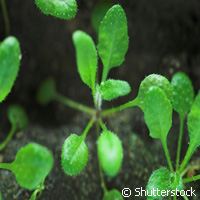Study offers insights into plants' internal clocks
EU-funded scientists have revealed how plants' biological clocks help them respond to changes in the times of dawn and dusk as well as to the length of the day. The findings shed new light on how living things respond to changing patterns of daylight and could help us better understand the effects of jet lag and shift work. The findings, by scientists in Hungary and the UK, are published in the journal Molecular Systems Biology. EU support for the work came from the EUCLOCK ('Entrainment of the circadian clock') project, which received EUR 12.3 million under the 'Life sciences, genomics and biotechnology for health' Thematic area of the Sixth Framework Programme (FP6). Many living things have circadian clocks which ensure that various aspects of metabolism, physiology and behaviour occur at optimal times in the daily cycle. Studies have demonstrated that several genes are most active at specific times of the day, and functionally related genes are often regulated to be active at the same time. The biological clocks that control these processes are 'entrained' by cues such as daylight. Biological clocks help plants manage their carbon metabolism optimally. During the day, plants use energy from the Sun to convert carbon dioxide and water into sugars and oxygen. This takes place in compartments known as chloroplasts. Some of the sugars are stored in the chloroplasts as 'transitory starch'. '[This] is broken down to provide a source of sugars throughout the night, preventing starvation-induced inhibition of plant growth,' the researchers write. 'Several genes involved in starch metabolism are rhythmically regulated,' they add. In this study, the researchers tested different mathematical models and carried out various experiments to determine the complexity of the processes controlling the circadian clock in Arabidopsis thaliana. They were also interested in determining how the clock maintains enough flexibility to cope with seasonal changes in day length and the times of dawn and dusk. Their investigations revealed that a mathematical model involving three feedback loops was better at predicting the results of practical experiments than models involving just one or two feedback loops. 'We showed that increased model complexity allowed the circadian phase of the model components to change flexibly in response to the photoperiod of the entraining LD [light:dark] cycle,' the scientists state. According to the researchers, 'The model's behaviour can be conceptually divided into the effects of light inputs, the day-time effects of the morning loop upon the evening-expressed genes, and the night-time effects of the evening loop upon the morning-expressed genes.' The scientists believe that their findings could be relevant to the agricultural sciences. 'Correct timing of rhythmic processes such as starch degradation is crucial for growth, so it is very likely that this temporal regulation of vegetative physiology has been subject to natural selection, and might contribute to crop improvement,' they point out. The findings could also have implications for human medicine; people's sleepiness, body temperature, blood pressure and physical strength all vary according to a 24-hour rhythm. 'Our results give us valuable information on how plants - and people - respond to changing lengths of day,' commented Professor Andrew Millar of the University of Edinburgh in the UK, who led the study. 'It could give a new way to understand how to cope when our daily rhythms of light and dark are interrupted.'
Countries
Hungary, United Kingdom



